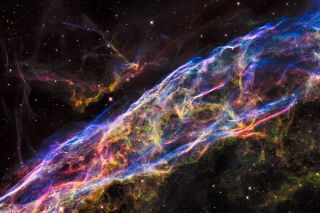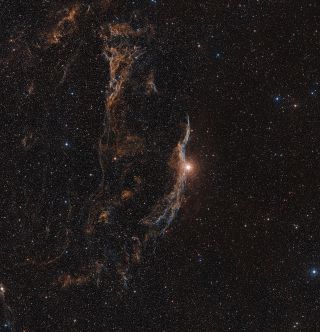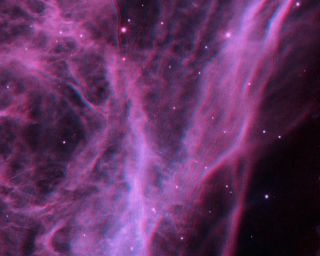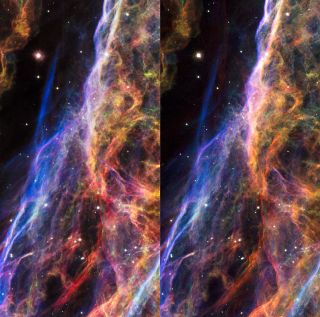The gorgeous, multicolored remnants of a destroyed star shimmer in stunning new images by the Hubble Space Telecope.
The new set of Hubble photos of the Veil Nebula, which researchers combined into several stunning videos, show a colorful cloud of material 110 light-years wide that lies about 2,100 light-years from Earth in the constellation Cygnus (The Swan).

The Veil Nebula's beauty belies its violent origins: The structure formed about 8,000 years ago, after a star 20 times more massive than the sun died in a supernova explosion, researchers said.
"Astronomers suspect that before the Veil Nebula's source star exploded, it expelled a strong stellar wind. This wind blew a large cavity into the surrounding interstellar gas," officials with the European Space Agency (ESA), which operates Hubble jointly with NASA, said in a statement.

"As the shock wave from the supernova expands outwards, it encounters the walls of this cavity — and forms the nebula's distinctive structures," they added. "Bright filaments are produced as the shock wave interacts with a relatively dense cavity wall, whilst fainter structures are generated by regions nearly devoid of material. The Veil Nebula's colorful appearance is generated by variations in the temperatures and densities of the chemical elements present."

Features that appear blue in the new images, for example, contain hotter gas than do green and red structures, researchers said.
Hubble also photographed the Veil Nebula back in 1997, so the new images are helping astronomers gauge how the gas cloud has evolved and expanded over the last 18 years. (The 1997 views were captured by Hubble's Wide Field and Planetary Camera 2, whereas the new photos were taken by the observatory's Wide Field Camera 3, which spacewalking astronauts installed in 2009.)
Get the Space.com Newsletter
Breaking space news, the latest updates on rocket launches, skywatching events and more!

The Hubble Space Telescope launched in April 1990. The observatory's initial images were blurry, and mission scientists soon discovered why — Hubble's 7.9-foot-wide (2.4 meters) primary mirror was slightly flawed.
But astronauts fixed the problem in 1993, and Hubble began beaming to Earth the amazing, supersharp images it's famous for today. Four additional servicing missions between 1997 and 2009 further repaired and upgraded the observatory, which operators say should keep going strong through at least 2020.
Follow Mike Wall on Twitter @michaeldwall and Google+. Follow us @Spacedotcom, Facebook or Google+. Originally published on Space.com.
Join our Space Forums to keep talking space on the latest missions, night sky and more! And if you have a news tip, correction or comment, let us know at: community@space.com.

Michael Wall is a Senior Space Writer with Space.com and joined the team in 2010. He primarily covers exoplanets, spaceflight and military space, but has been known to dabble in the space art beat. His book about the search for alien life, "Out There," was published on Nov. 13, 2018. Before becoming a science writer, Michael worked as a herpetologist and wildlife biologist. He has a Ph.D. in evolutionary biology from the University of Sydney, Australia, a bachelor's degree from the University of Arizona, and a graduate certificate in science writing from the University of California, Santa Cruz. To find out what his latest project is, you can follow Michael on Twitter.
